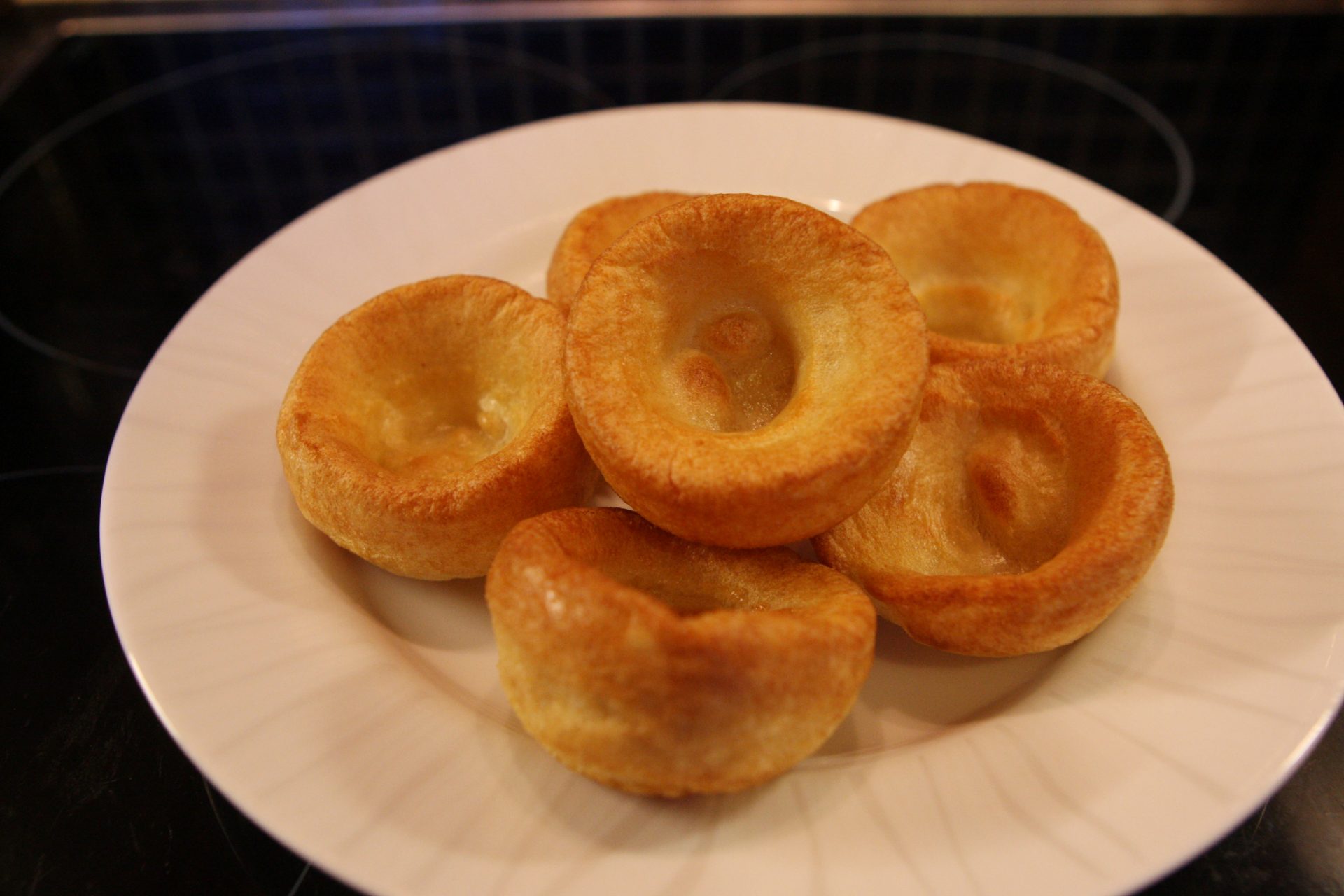These are the best British dishes
The Brits love their food, so much so there are many days throughout the year that celebrate them. Take, for instance, Yorkshire Pudding Day - a celebration held on the first Sunday each February - this year, the 2nd. The Yorkshire Pudding is just one of the many quintessentially British foods we love.
Britain has a remarkable, diverse range of produce that has been the heart of many incredible British dishes. We take a look at the top British dishes that have been passed on through the decades and showcase the wonderfully diverse British culture.
Photo by Sebastian Coman Photography/Unsplash
Fish, chips and mushy peas! Is there anything more British than fish and chips? Freshly cooked, hot fish and chips, smothered in salt and vinegar, wrapped in newspaper and eaten out-of-doors on a cold and wet day – it simply cannot be beaten. The very best place to eat fish and chips is in the open air but the sea of course. The great British public soon decided that putting fried fish and chips together was an extremely tasty combination and so the national dish of fish and chips was born.
Photo by Meelan Bawjee/Unsplash
Both Lancashire and London claim to be the first to invent this famous meal – chips were a cheap, staple food of the north whilst fried fish was introduced in London’s East End.
The first fish and chip shop in the North of England is thought to have opened in Lancashire, in about 1863. Mr Lees sold his fish and chips with the following inscription in the window, “This is the first fish and chip shop in the world”.
However in London, it is said that Joseph Malin, a Jewish immigrant, opened a fish and chip shop in Cleveland Way in the 1860s.
Photo by Tadas Petrokas/Unsplash
Also known as sausages and mash, this traditional dish consists of sausages and mashed potato, and is often accompanied with peas and onion gravy. This dish can usually be found on a menu in most pubs across the country, or can be made very easily at home.
Photo: TheAndrasBarta/Pixabay
The term bangers supposedly originated during World War 1, when meat shortages resulted in sausages being made with a number of fillers, most notably water, that caused them to explode when cooked.
Photo: Rachel Clark/Unsplash
Apparently breakfast is the most important meal of the day. Well, the traditional "Full English" is a match for the heartiest of appetites. This breakfast usually includes: bacon, sausages, eggs, baked beans, toast, mushrooms, tomatoes, hash browns and black puddings, with a side portion of fried bread or toast.
Photo: Sahil Pandita/Unsplash
The tradition of the English breakfast first began with the gentry, before then being adapted by the Victorians who refined the tradition into almost an art form. Following them were the Edwardians who standardised the ingredients, giving us the English breakfast that is commonly recognised today and thus, created a truly national breakfast tradition and an icon of British culinary culture. It is now commonly served in pubs under the heading "All Day Breakfast.
Photo: Elle May/Unsplash
Oh how the Brits love their Sunday Roast dinners. This dish is made up of: roasted meat (beef, chicken, lamb or pork), roast potato, Yorkshire pudding, stuffing, vegetables (usually a selection of: roast parsnips, peas, carrots, beans, broccoli and cauliflower, not necessarily all) and gravy. Of course there is a vegetarian and vegan option, commonly comprised of a 'nut roast'.
Photo: Rumman Amin/Unsplash
Originating in the British Isles as a meal to be eaten after church on Sunday. This is because on Sundays, all types of meat and dairy produce were permitted to be eaten; unlike on Fridays, where many Roman Catholics and Anglicans traditionally abstain from eating meats, so commonly ate fish instead.
Photo: Claudio Schwarz/Unsplash
This dish is another simple recipe you can make at home; sausages in Yorkshire pudding batter and often served with gravy and vegetables. British people sure do love Yorkshire puddings.
There is no record of the dish ever being baked with toads in place of the meat. The reference to toads is believed to be referring to the similarity in appearance to toads while they are waiting for prey in their burrows, their heads just visible against the earth.
Photo: Camerauthor Photos/Unsplash
These are two dishes extremely similar; the only real difference being the choice of meat used in the dish; in shepherd’s pie you use lamb whilst in cottage pie you use beef. And just to add to the confusion, neither of these dishes are actually pies in the typical sense of pastry. Shepherd’s pie and cottage pie consists of: mince (lamb or beef), vegetables (such as; carrots, tomatoes, mushrooms and onions), and mashed potatoes which are on top of the pie and finished off with some grated cheese to give it a crispy topping.
No really exciting origin to this name really, simply that it was referred to as cottage pie until some people renamed the mutton or lamb dish as shepherds pie. The cottage pie is to the Brits as Pizza is to the Italians and Paella to the Spanish - it was meant for using up what products you have 'left over' in your cupboard.
This much loved British pie is one of the true favourites. The ingredients include: beef, kidney, fried onion and gravy all wrapped up in pastry, so what’s not to love?
Photo: FitNish Media/Unsplash
Pete Brown proudly claims in his book, Pie Fidelity, “Britain does pies better than anyone else in the world and has done since pastry was first perfected by chefs working for the Tudor monarchs.”
Photo: Nathan Dumlao/Unsplash
Scones, cucumber sandwiches, cake and tea. How frightfully British. Although we Brits are famed for having afternoon tea every day at 5pm- that’s actually a bit of a myth . Afternoon tea is a treat that is generally taken at around 3-4pm.
Photo: Sebastian Coman Photography/Unsplash
Afternoon tea was introduced in England by Anna, the seventh Duchess of Bedford, in the year 1840. The Duchess would become peckish around four o’clock in the afternoon. In her household the evening meal was served fashionably late at eight o’clock, therefore leaving too long a period of time between lunch and dinner.
Photo: Jelleke Vanooteghem/Unsplash
A pastry stuffed full of deeply flavoured meat and vegetables, Cornish pasties first became popular with miners as they were easily transportable and could be eaten without a plate or cutlery.
Photo: scotteckersley/Unsplash
Nowadays, the classic pasty plays an important part in British food culture. It's even believed to have inspired the South American empanada.
Photo: quicksandala/Morguefile
A traditional bread pudding dish, popular in British cuisine. It is made with slices of buttered bread, sprinkled with raisins then layered in an oven dish before it is covered with an egg custard mix and seasoned with nutmeg, vanilla, or other spices if preferred, then baked.
This dish goes all the way back to the 11th or 12th century when it was a dish referred to as the "poor mans pudding" because it was initially created by frugal cooks who sought ways of using up stale bread.
Photo: Mike Kenneally/Unsplash
A dish of sweet fruits (typically apple, cherry, or bramble) topped with a crumbed mix of: 2 parts flour, 1 part butter, 1 part sugar. It is then only very gently patted in place so that, when baked, it remains crumbly.
Photo: Duncan Kidd/Unsplash
There is a similar dessert from the early 19th Century called breadcrumb bake, but in reality, the term 'crumble' seems to be quite modern. It is possibly the case that it was popularised during the rationing of the Second World War as a way of providing a wheaty topping to fruit.
Photo: Karolina Kołodziejczak/Unsplash
Not for everyone. Haggis, the national dish of Scotland is a type of pudding composed of the liver, heart, and lungs of traditionally a sheep (but you could use an other animal), minced and mixed with beef or mutton suet and oatmeal, then seasoned with onion, cayenne pepper, and other spices. The mixture is packed into a sheep's stomach and boiled. There really is no better way to make it sound more appealing.
The dish is traditionally Scottish, however some have speculated that the first haggis was carried to Scotland aboard a Viking longboat. The Scots typically eat the dish to celebrate Burns night, a celebration of the life and poetry of the poet Robert Burns. And, of course, the poem "Address to a Haggis" is recited.
According to Food writer Georgina Ingham, “The Victorian picnic was a way of taking the meal in its entirety outside, whereas the modern picnic is about fuss-free easy to eat food, that can be enjoyed whilst in good company and enjoying the short-lived British summertime”. Either way, the picnic is an art form in Britain.
The Scotch egg is made by wrapping breaded meat around a boiled egg. Scotch eggs can be enjoyed hot, cold or with a condiment of your choice. They are now popular in many high-end restaurants with chefs who experiment with different meats and coatings.
Photo: Sebastian Coman Photography/Unsplash
There are many different versions nowadays of this pastry-based treat, which can contain meat or vegan fillings, helping to make the sausage roll a staple of British picnics. It is also a very easy takeaway lunch for many.
Photo: Matt Seymour/Unsplash
Coronation chicken was created by Le Cordon Bleu chef, Rosemary Hume, to celebrate Queen Elizabeth II’s Coronation lunch in 1953. This dish is enjoyed by royals and street party-throwing Brits alike. A British classic to add to any picnic, it can spice up a simple salad or even work as a sandwich filling.
Pork pies have been eaten in Britain since medieval times, when, originally, their thick pastry crusts were simply used as a form to preserve meaty fillings. Packed with flavour, buttery pastry and British meat, it is a celebration in itself of the traditional British dishes that many have come to love.










































